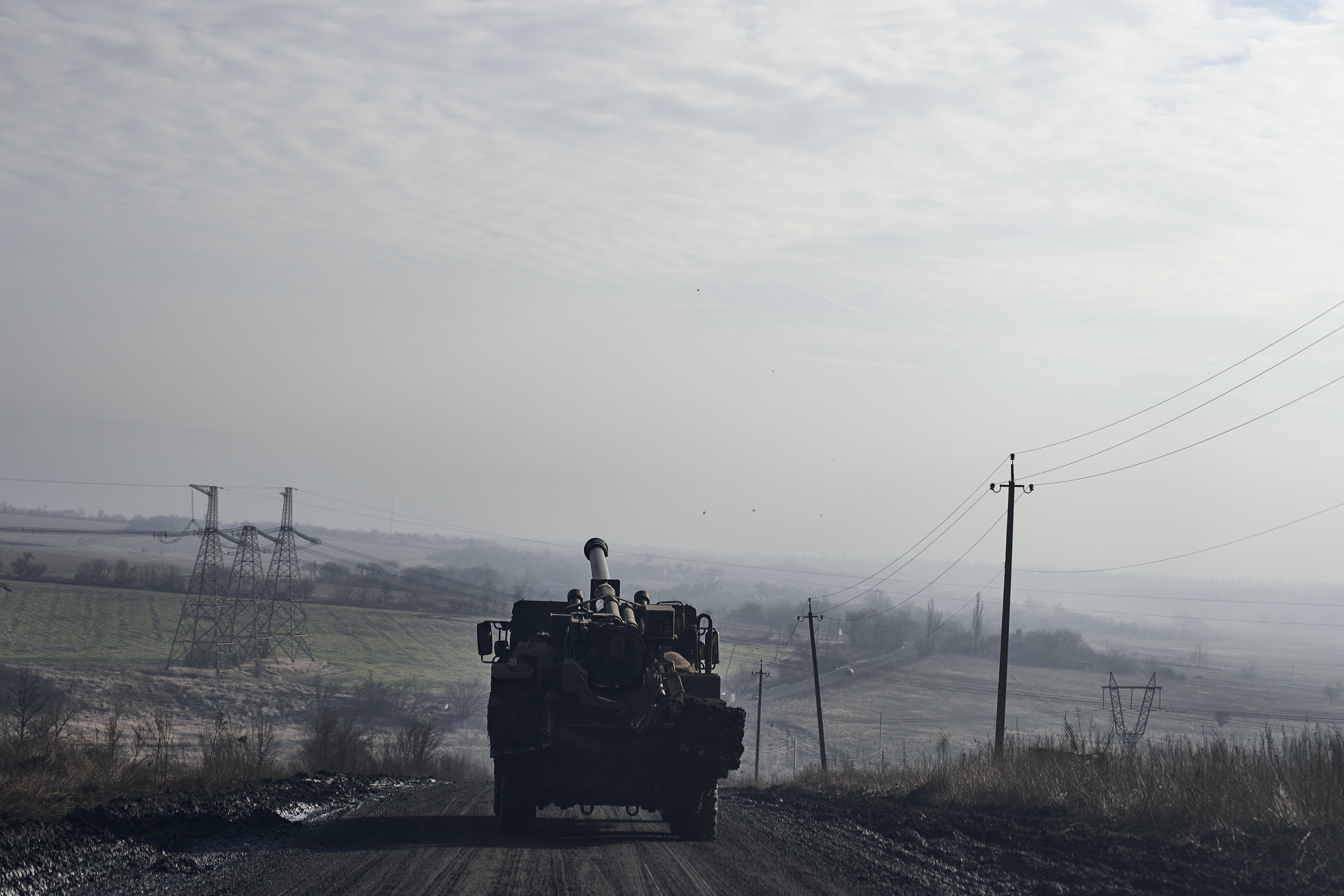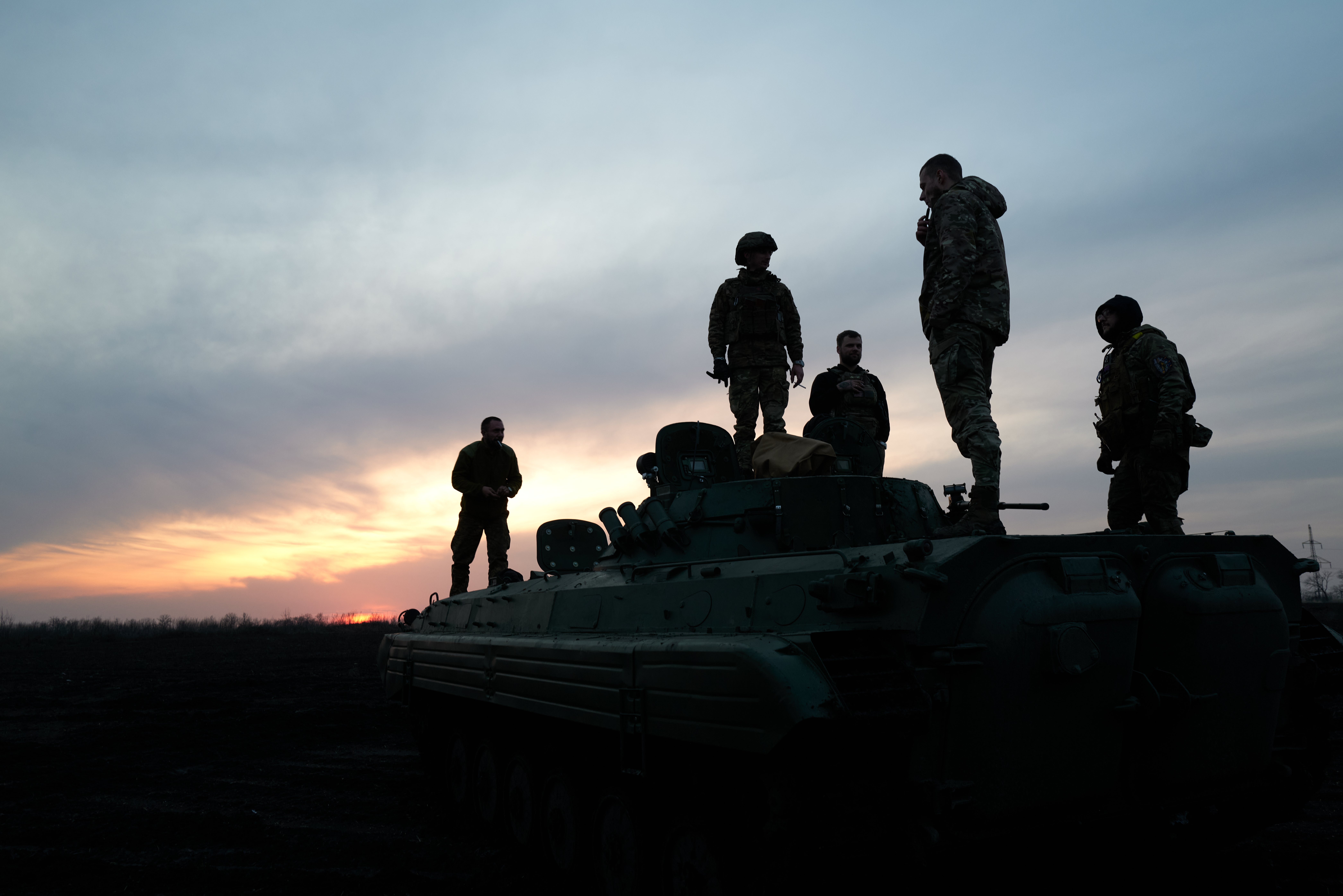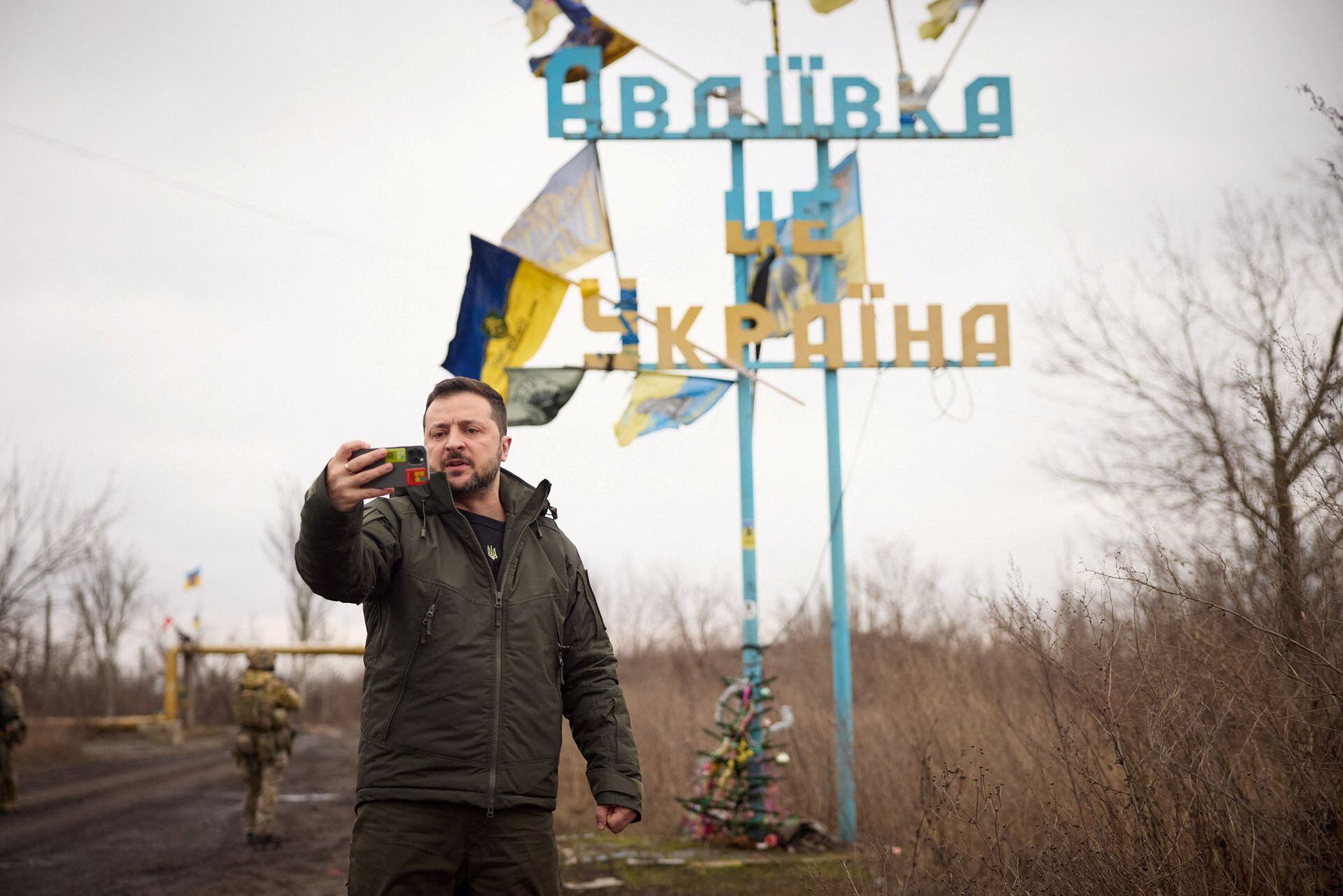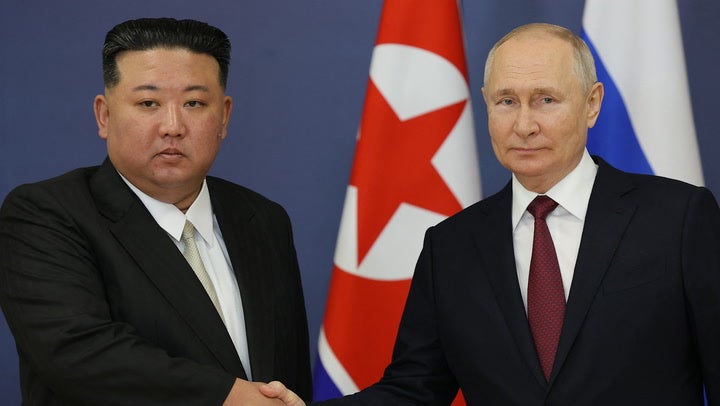The crack unit of frontline troops that’s Ukraine’s last hope of saving key town from Russia
Kyiv has sent frontline-hardened troops from one of its most prominent units to try and stem Russian advances, writes Tom Watling


Ukraine has sent battle-hardened troops from a crack unit into the “hell” of fighting in the key eastern town of Avdiivka – as Kyiv seeks to keep it out of the hands of Vladimir Putin’s forces.
After months of heavy fighting, Russia is trying to encircle and capture Avdiivka and use it as a stepping stone towards its aim of taking full control of the industrial region of Donbas, made up of the areas of Donetsk – where Avdiivka sits – and Luhansk. Ukraine has vowed to ensure Russia advances no further into its territory, with the fight for control of Avdiivka taking on a symbolic significance to both sides on a level similar to the town of Bakhmut roughly 60 miles away.
That was the last significant claim of territory by Russia, in May last year, with the mercenary Wagner Group part of the vanguard.
The fight for Avdiivka has now reached a critical phase, with Russian forces appearing poised to encircle Kyiv’s troops remaining in the area and potentially break their supply lines, officials and war analysts have said. Moscow’s forces surrounded it on three sides earlier this year.
And Russian forces have fired roughly 600 shells on the city in the past month, according to Ukrainian journalist Yuri Butusov, who has just travelled back from Avdiivka. “The destruction is extensive,” he said.
Enter one of Ukraine's most prominent fighting units, the Third Assault Brigade, which has said it has been rushed to Avdiivka to reinforce Kyiv's troops there. The brigade, which comprises assault infantry, said the situation in Avdiivka was “hell” and “threatening and unstable”, but that it had conducted a raid against Russian forces in parts of the town and inflicted heavy casualties.
The brigade took part in a counteroffensive in eastern Ukraine last summer and fought in the battle of Bakhmut. “The enemy is continuing the active rotation of its troops [around Avdiivka] and is deploying new forces and equipment to the town,” the brigade said on the Telegram messenger app.
“The situation at the moment the brigade was brought in was extremely critical,” it added.

Avdiivka has been a flashpoint of the frontline since the Russians launched a mechanised offensive last October, but up to now, Ukrainian defences had held strong. Russia, meanwhile, has lost hundreds of vehicles and tens of thousands of soldiers.
But depleted stockpiles of munitions as a result of paused Western military support have left Ukraine vulnerable on its eastern frontline.
The unit’s deputy commander, Maksym Zhorin, said the fighting was much fiercer than the battle of Bakhmut and that Kyiv’s forces were outnumbered and outgunned in Avdiivka. “The battles in Avdiivka are many times more hellish than the hottest battles of this phase of the war, which were in Bakhmut,” he said on Telegram.
And recent Russian advances over the past two weeks appear to be the result of the Kremlin switching strategies from vehicle to infantry-led assaults as they approached the eastern side of the city, analysts told The Independent.
Kyiv’s new military chief Oleksandr Syrskyi visited near Avdiivka this week, admitting that the “operational environment is extremely complex and stressful”.
But despite calls for the Ukrainian military chief to withdraw his forces from Avdiivka – it has become known by soldiers as “Avdiiv Hell” - he added that he “made a number of important decisions aimed at strengthening the combat capabilities of [Ukraine’s] military units and preventing enemy actions” in the city.

His comments appear to be a reference to the rotation of fresher forces into the city: the 110th Brigade, which has been stationed in Avdiivka for nearly two years is moving back; the Third Assault Brigade is moving in.
Ukrainian officials say not a single building remains intact in the city after months of heavy Russian bombardment, and as the Kremlin’s forces push deeper into the city, the ability for Ukraine’s forces to withdraw will become more difficult.
“A difficult political decision will need to be made soon lest the remaining Ukrainian forces lose the ability to withdraw in good order,” wrote Mick Ryan, a retired Australian major-general and military strategist, in a note.
The city sits in an industrial region nine miles north of the Russian-controlled city of Donetsk. Before the war, its Soviet-era coke plant was one of Europe’s top producers; now, according to officials, it is serving as a crucial and final stronghold in the city’s defence.
Ukrainian war tracker DeepState reported that Russian forces had made further gains south of the coke plant, which is located in the northwest, and had effectively severed the city in two.
Six weeks into 2024, after rumours appeared on Telegram last week that Russian forces had entered the northeast of the city, using cloud cover to evade overhead drone reconnaissance, the situation in Avdiivka looks more uncertain than ever.
“In Avdiivka, a manoeuvre is underway in some places to withdraw our units to more advantageous positions, in some places to force [the Russians] out of positions,” Ukraine’s southern military spokesman Dmytro Lykhovy said in televised comments on Thursday.
”The key announcement with regards to all this is that supplies to Avdiivka and evacuations from there are difficult”.
He added the military had activated a “reserve logistics artery” that had been prepared in advance.
It was the first official confirmation that Russia had breached the main supply line into the city. Vitalii Barabash, the head of the city’s military administration, warned that Russia was now “pressing very powerfully” on the northeast part of the city.

“The enemy is still trying to cut off the coke plant from the city through the country massif, and he is pressing there very powerfully,” he said.
Earlier last week, he said: “The situation is very difficult, very tense. While for several weeks we were saying the situation was very difficult but under control, now the situation is very difficult and in some places critical.”
Andrew Perpetua, a war analyst who tracks vehicle losses on the frontline, said there had been a noticeable downtick in destroyed or damaged tanks in the past few weeks which, he believed, was indicative of Russia’s strategic switch to infantry-led assaults, throwing waves of troops at the battle.
“The vehicles were used out in the open,” he said, referring to the fields to the east of the city, “but once [Russian forces] hit the urban areas, it was basically all infantry.”
Experts have warned that Russia’s concurrent aggressive bombing campaign, not unique to Avdiivka but rather a trend of the Kremlin’s military strategy throughout the war in Ukraine, has been especially successful this time around due to Kyiv’s depleted artillery stockpiles, a direct result of delayed Western military support.
Federico Borsari, a fellow at the Center for European Policy Analysis (CEPA), told The Independent that Ukrainian forces were being forced to ration their shells because of a lack of Western supplies in the past six months.
”Ukraine cannot weaken Russia’s forward positions because they are having to ration their artillery shells due to insufficient stocks,” he said.

In turn, he added, Russian forces are able to move closer to the Ukrainian positions and subsequently transition to infantry-led assaults in the city.
While the EU signed off on a delayed support package, although not directly military based, last month – in the US, Ukraine’s largest single source of military support has been held up by a spat in Congress about immigration at the US southern border, led by Donald Trump-supporting Republicans. While the Senate has now cleared tens of billions of dollars in fresh funding, it is still uncertain if the bill will make it swiftly through the other chamber, the House of Representatives.
Meanwhile, North Korean and Iranian supplies to Russia have given the Kremlin a significant artillery advantage, estimated to be five to one.
Avdiivka, Borsari added, has become the theatre in which this disparity is playing out to Russia’s advantage.
“There is a direct line between the lack of deliveries from Western partners to Ukraine and the current situation in Avdiivka,” he said.
Butusov, meanwhile, said Ukraine’s soldiers in Avdiivka were “paying for this shortage with their blood.”
Mykola Bielieskov, a fellow at the National Institute for Strategic Studies, an official think tank in Kyiv, said the Kremlin was likely looking to exploit such shortages further.
He said he believed the battle for Avdiivka is driven by a Russian desire to strengthen the hand of the West’s Ukraine sceptics by providing them so-called evidence that their military investment to Kyiv is in vain. It is, he suggested, a vicious circle.
In that vein, any Russian takeover of Avdiivka may be a Pyrrhic victory, Borsari said, in terms of the soldiers and materiel lost to win a city entirely razed to the ground.
But it is fight that Ukraine are desperate not to lose.
Join our commenting forum
Join thought-provoking conversations, follow other Independent readers and see their replies
Comments


Bookmark popover
Removed from bookmarks